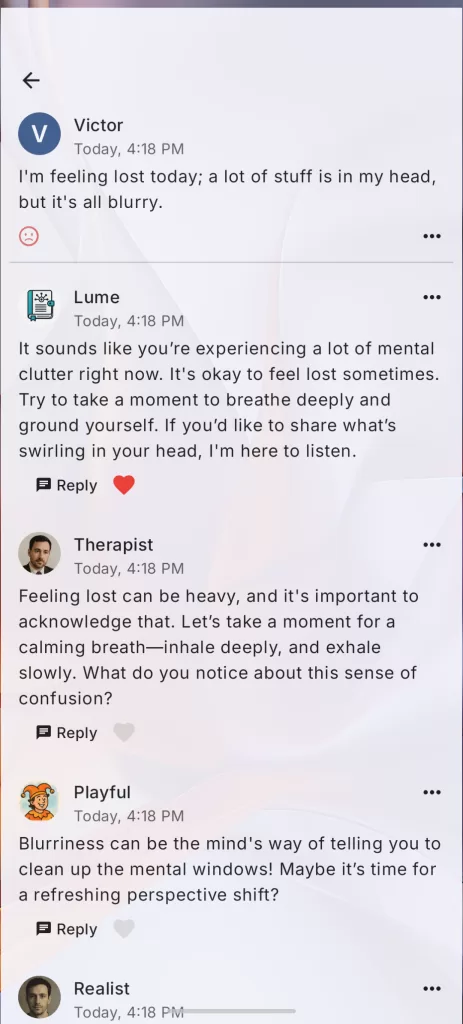How to Journal for Anxiety: 5 Steps to Calm Your Mind and Take Back Control
How to journal for anxiety isn’t just a question – it’s a skill anyone can build.
If you’ve ever sat with racing thoughts, a tight chest, or that feeling of “everything is too much,” journaling can be one of the fastest ways to slow down and sort through the noise.
But not all journaling is helpful. Done wrong, it can even amplify anxiety. This guide walks you through how to journal for anxiety effectively – so you can feel better, not worse.
A Real Story
A few years ago, I worked with someone named Ana. She was in her early 30s, high-performing, always-on — but secretly living with daily panic attacks.
At first, journaling didn’t help. “It just made me more aware of how anxious I was,” she told me.
But everything changed when she gave herself permission to stop writing perfectly — and start writing honestly.
Each night, she’d open her phone, set a 5-minute timer, and type whatever was in her head. No grammar. No structure. Just thoughts. After a week, her sleep improved. After two weeks, the panic attacks began to space out.
Her takeaway? “It didn’t fix everything. But it gave me a pause — and I badly needed that.”
This guide is built around what worked for Ana — and for thousands of others trying to journal for anxiety in a way that actually helps.
🧠 Why Journaling Helps With Anxiety
Journaling is more than venting – it’s a tool for clarity. When anxious, your brain tends to loop thoughts, imagine worst-case scenarios, or catastrophize. Writing breaks that loop.
It helps you:
- Externalize thoughts and create emotional distance
- Identify thought patterns or triggers
- Reframe negative thinking
According to Verywell Mind, writing for just 5 to 15 minutes can ease symptoms of anxiety and stress.
✍️ Step 1: Be Honest, Not Impressive
When learning how to journal for anxiety, forget structure. Forget grammar. You’re not writing a novel.
Instead, ask:
- What’s bothering me right now?
- What anxious thought keeps popping up?
- What happened today that unsettled me?
Even one raw sentence is better than a polished page that hides the truth.
⏱️ Step 2: Set a 10-Minute Timer
Why does timing matter when learning how to journal for anxiety?
Because anxiety thrives in mental spirals. A simple 10-minute timer puts a boundary around those thoughts. When time’s up, stop writing. Let your nervous system settle.
Bonus tip: Try journaling at the same time daily – like before bed or right after work – to make it a calming routine.
📝 Step 3: Use Prompts to Stay Grounded
Don’t let a blank page stop you. These proven prompts help you journal for anxiety without spiraling:
- What triggered me today — and how did I respond?
- What’s one thing I can control right now?
- What would I say to a friend who feels this way?
Apps like Lume offer guided prompts, voice-to-text journaling, and replies from AI personas trained to support your emotional health. It’s like journaling with a calm, nonjudgmental companion.

🧭 Step 4: Separate Thought from Fact
Your anxious thoughts are valid – but not always accurate.
To journal for anxiety effectively, ask:
- What actually happened?
- What’s the story I’m telling myself about it?
- What evidence do I have?
This builds self-awareness and trains your brain to pause before reacting emotionally.
🌱 Step 5: End with One Gentle Question
Wrap up each entry with a grounding reflection. Try:
- What’s one kind thing I can do for myself today?
- What do I need most right now?
- What’s something that is going okay?
This reinforces hope, agency, and self-compassion – three antidotes to anxious thinking.
🧘 Final Thought
Learning how to journal for anxiety isn’t about doing it “right”. It’s about doing it consistently, with kindness toward yourself.
Start today. Write a sentence. Set a timer. Let your mind breathe.
And if you need a gentle guide, try Lume – the AI-powered journaling app that listens, reflects, and helps you go deeper.
Try it on Android or try it on iOS.
You can also use it on Web.






